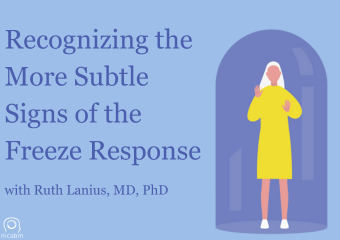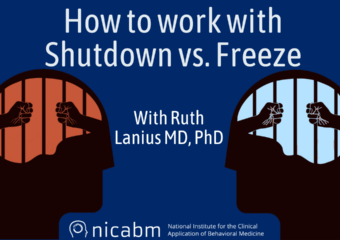It’s often easy to identify the obvious cues that your client is in freeze . . . . . . but what about times when the signs are so subtle, you might dismiss it (or even overlook it)? In the video below, Ruth Lanius, MD, PhD shares how recognizing a more subtle sign of freeze […]
How to work with Shutdown vs. Freeze – with Ruth Lanius, MD, PhD
In the face of a traumatic experience, some clients become unable to move. This can sometimes indicate that a client is experiencing either a freeze response or a shutdown response to trauma. And according to Ruth Lanius, MD, PhD, there are key neurological differences that can help us distinguish between the two . . . […]
2 Strategies for Working with the Freeze Response
As therapists, we may sometimes feel unsure about what to do when a client enters a freeze response and loses their ability to speak. What’s more, it can be difficult to gauge a client’s sense of safety when they’re unable to talk to us. So in the video below, Janina Fisher, PhD walks us through […]
Working with Emotional Distress – with Janina Fisher, PhD
When it comes to treating trauma, we’re often working with clients who have a low tolerance for distress. And when faced with traumatic memories or difficult emotions, they may respond by slipping into a state of hypoarousal to defend against the pain. So in the video below, Janina Fisher, PhD shares how she helps hypoaroused […]
Working with the Freeze Response in the Treatment of Trauma with Stephen Porges, PhD
When a client freezes during a session, how do you help them come out of their trauma response (without further triggering them)? This can be challenging because proximity, movement, and eye contact can all feel threatening to a client who is frozen and hyper-aware of danger. So in the video below, Stephen Porges, PhD, shares […]




